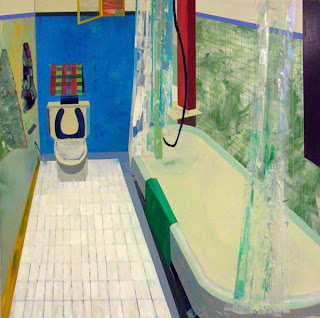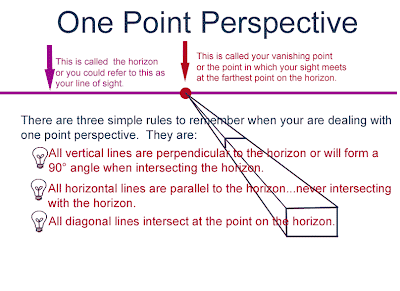In class on Wednesday 3/6:
Complete at least four (4) composition studies in your sketchbook. Each study should focus on a different composition tip from the examples below. While you are working on these, I'll be coming around and taking a look at your collage portion of the midterm assignment.
Tips for creating Composition:
Rule of Thirds
Imagine that your image is divided into nine equal segments by two vertical and two horizontal
lines. Try to position the most important elements in your scene along these lines, or at the points where they intersect. Doing so will add balance and interest to your drawing.
Balancing Elements
Placing your main subject off-centre, as with the rule of thirds, can create a more interesting
drawing, but it can leave a void in the scene, which can make it feel empty. You can balance
the 'weight' of your subject by including another object of lesser importance to fill the space.
Leading Lines
When we look at a drawing our eye is naturally drawn along lines. By thinking about how you
place lines in your composition, you can affect the way we view the image, pulling us into the picture, towards the subject, or on a journey 'through' the scene. There are many different types of line -straight, diagonal, curvy, zigzag, radial etc - and each can be used to enhance our drawing composition.
Symmetry & Patterns
We are surrounded by symmetry and patterns, both natural and man-made. They can make
for very eye-catching compositions, particularly in situations where they are not expected. Another great way to use them is to break the symmetry or pattern in some way, introducing tension and a focal point to the scene.
Viewpoint
Before drawing your subject, take time to think about where you will draw it. Our viewpoint has
a massive impact on the composition of our drawing, and as a result it can greatly affect the message that the shot conveys. Rather than just drawing from eye level, consider drawing from high above, down at ground level, from the side, from the back, from a long way away, from very close up, and so on.
Negative Space
Think about the balance between positive and negative space
Depth
Because drawing is a two-dimensional medium, we have to choose our composition carefully
to convey the sense of depth that was present in the actual scene. You can create depth in a drawing by including objects in the foreground, middle ground and background. Another useful composition technique is overlapping, where you deliberately partially obscure one object with another. The human eye naturally recognizes these layers and mentally separates them out, creating an image with more depth.
Framing
The world is full of objects that make perfect natural frames, such as trees, archways and
holes. By placing these around the edge of the composition you help to isolate the main subject from the outside world. The result is a more focused image, which draws your eye naturally to the main point of interest.
Cropping
Often a drawing will lack impact because the main subject is so small it becomes lost among
the clutter of its surroundings. By cropping tight around the subject you eliminate the
background ‘noise’; ensuring the subject gets the viewer's undivided attention.
Experimentation
Take advantage and experiment with your composition - you never know whether an idea will
work until you try it.
Composition in drawing is far from a science, and as a result all of the 'rules' above should be
taken with a pinch of salt. If they don't work in your piece, ignore them; if you find a great composition that contradicts them, then go ahead and use it anyway. But they can often prove to be spot on, and are worth at least considering whenever you are working.

































